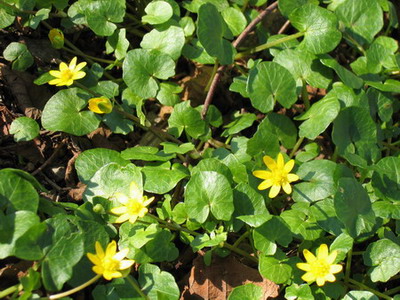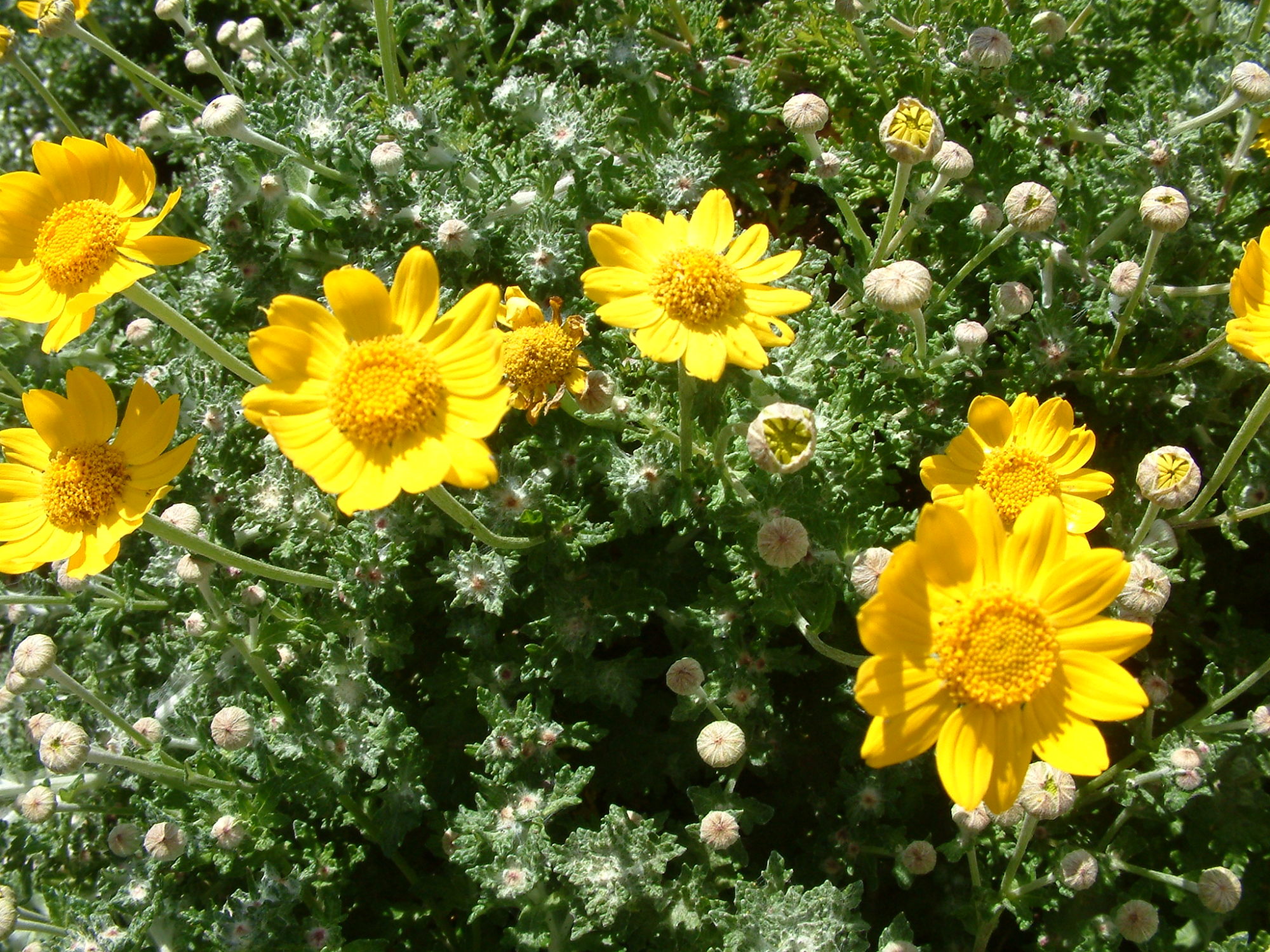Introduced species: Lesser celandine (Ficara verna, formerly Ranunculus ficaria)
Characteristics: Lesser celandine, also known as fig buttercup, is an herbaceous, perennial plant, with a basal rosette of dark green, shiny, stalked leaves that are kidney- to heart-shaped; these are starting to appear now in the Portland area. The glossy, butter-yellow flowers open in March and April, and are borne singly on delicate stalks that rise above the leaves. After flowering, all above-ground portions of the plant die back. Pale-colored bulblets are produced along the stems of the above-ground portions of the plant, but are not apparent until late in the flowering period. There are many varieties of lesser celandine, including a double-flowered form with many crowded petals and dark green leaves mottled with silvery markings. Leaves and tubers (see below) of the plant are edible when cooked; raw leaves may be eaten in small quantities before the plant flowers, but are toxic once flowering has begun.
NOTE: Always triple-check your identification before consuming any wild plant. This plant closely resembles marsh marigold (Caltha palustris), a native wetland species. Marsh marigold flowers are on stalks at least 8” long, and the plant does not form solid monocultures or bulblets on the stems. Be careful not to confuse these species.
Spread: Lesser celandine spends much of the year (summer through early winter) underground as thickened, fingerlike tubers or underground stems. It spreads primarily by vegetative means through abundant tubers and bulblets, each of which is ready to become a new plant once separated from the parent plant. The tubers of lesser celandine are prolific and may be unearthed and scattered by the digging activities of some animals, including well-meaning weed pullers, and transported during flood events. Large infestations appear as a green carpet with yellow dots, and can cover acres of forest floor.
Control: Lesser celandine is very difficult to control but it can be managed with persistence over time using methods that are site-appropriate. For small patches, lesser celandine may be pulled up by hand or dug up using a hand trowel or shovel. It is very important to remove all bulblets and tubers; digging up the top several inches of soil around the infestation and screening it may help with this. For larger infestations, the use of systemic herbicide is more practical, killing the entire plant tip to root and minimizing soil disturbance. The window of opportunity for controlling lesser celandine is very short, due to its life cycle. In order to have the greatest negative impact to celandine and the least impact to desirable native wildflower species, herbicide should be applied in late winter-early spring (February/March through May). Contact the Oregon Department of Agriculture for advice on appropriate use of herbicides.
Native replacement: Oregon sunshine (Eriophyllum lanatum, pictured below) is a spreading, easy-to-grow perennial with yellow flowers, though these appear later in spring. There are also several native buttercup species with early yellow flowers; probably the most common of these is western buttercup (Ranunculus occidentalis), which will grow readily in a variety of habitats.


